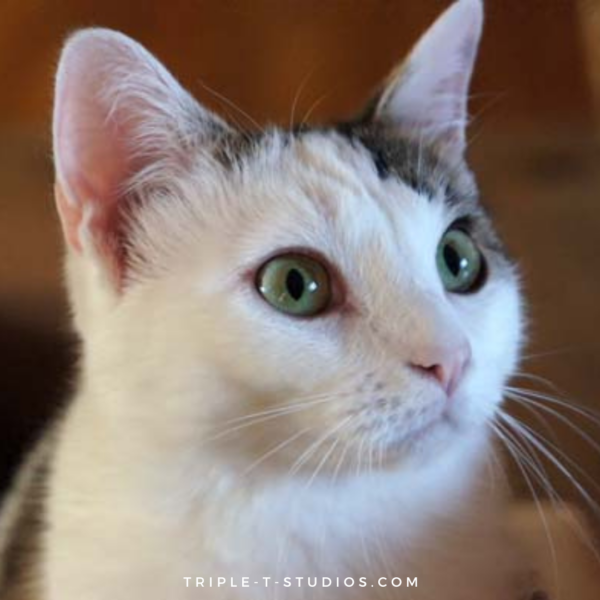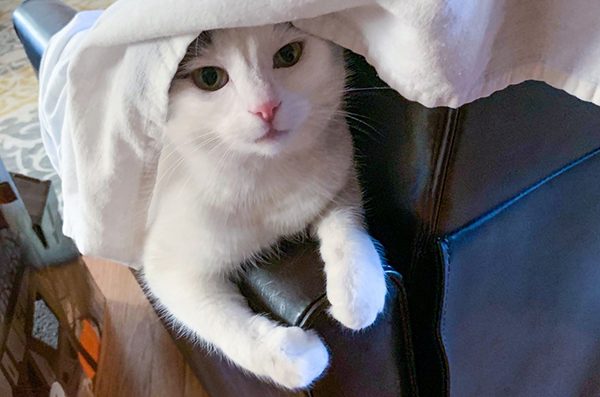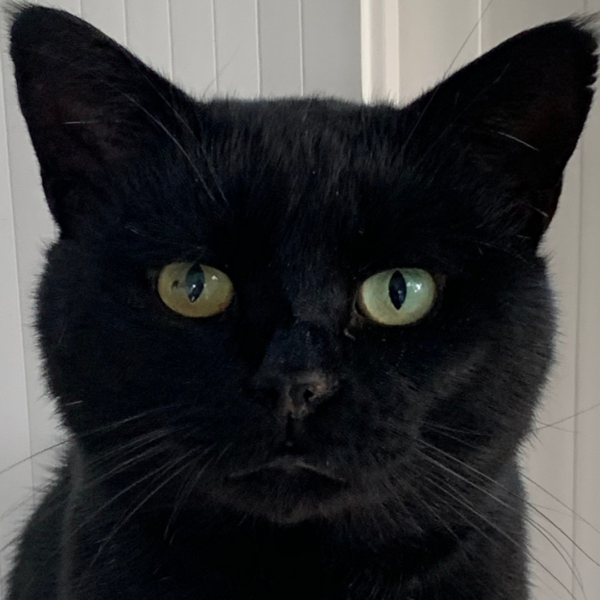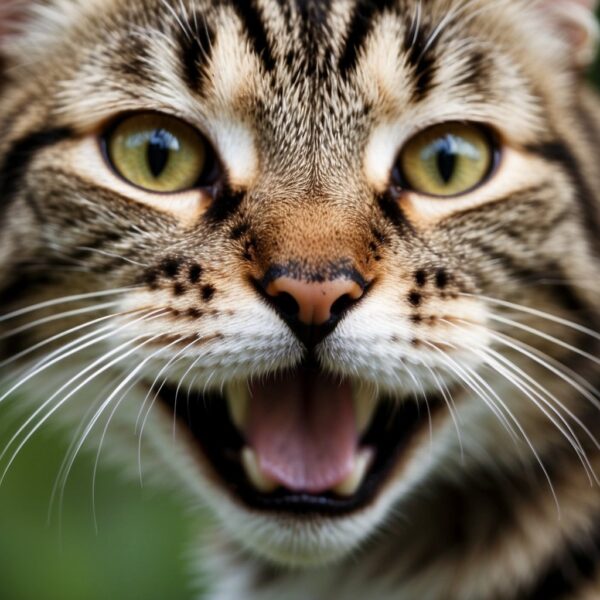
Cat Nose Prints: Unique Cat Identification
Cats, the ever-mysterious and beloved pets, carry a unique identifying feature much like the human fingerprint, cat nose prints. Just as every human has distinctive fingerprints, every cat possesses a distinct pattern of ridges and bumps on their nose. This characteristic has sparked interest in its potential for reliable identification. While microchipping is a common modern method for securing a pet’s identity, cat nose prints offer a non-invasive way to distinguish one cat from another, opening up avenues for new identification systems that could complement or, in some cases, even replace the need for microchips.
The practical use of cat nose prints in identification has caught the eye of researchers and animal organizations alike. Studies assessing the viability of nose patterns as a biometric marker have underscored the potential for this method to contribute to databases for lost or found cats, helping to reunite them with their guardians more efficiently. With the advancement of imaging technology and analytical software, such as sparse representation and deep neural networks, the practice of cataloging these unique identifiers could become more widespread. Meanwhile, the interest in nose prints extends beyond identification. They also provide insights into various aspects of feline health and behavior.
Key Takeaways
- Each cat’s nose print is unique and can be used for identification.
- Technology is advancing to utilize nose prints as biometric identification tools.
- Nose prints offer additional insights into feline health and behavior.
The Uniqueness of Cat Nose Prints
Cat nose prints are as distinct as human fingerprints, offering a unique pattern of bumps and ridges that can serve as an individualized marker for feline identity.
Anatomical Composition
The nose of a cat is covered with a pattern of bumps and ridges that are unique to each individual. This pattern, much like the human fingerprint, is determined by the distinct topology of the cat’s nasal dermis. These features are not visible to the naked eye but can be revealed through certain imaging techniques. The composition of a cat’s nose print comprises a series of lines and shapes, forming a pattern that remains consistent throughout the cat’s life.
Genetic Factors
The individuality of cat nose prints arises from genetic factors that influence the development of the skin on their noses. Just as no two human fingerprints are alike due to genetic variation, the same principle applies to the nose prints of cats. Each cat’s genes dictate the unique pattern of bumps and ridges on their nose, making it an inherent characteristic of the animal. These genetic blueprints ensure that each cat has a distinctive nose print, separate from any other cat.

Cat Identification Through Nose Prints
Cat nose prints hold distinct patterns that serve as a reliable tool for identification purposes. They are akin to human fingerprints in their uniqueness and can aid in verifying a cat’s identity, especially when they become lost.
Comparison with Human Fingerprints
Just as each human has a unique set of fingerprints, every cat possesses a distinct nose print. The texture of a cat’s nose is characterized by bumps and ridges, which create patterns that are unique to each individual. These patterns can be cataloged and used as a biometric marker. Veterinarians and cat researchers study these nose prints to distinguish one cat from another, establishing a reliable method for identification.
- Uniqueness: No two cats have the same nose print; they are completely unique to the individual.
- Permanent: Nose prints are long-lasting and do not change significantly over the cat’s lifetime.
Nose Prints in Domestic and Lost Cats
For domestic cats, nose print identification can be a useful tool for guardianss to register their cats with veterinary clinics or pet recovery databases. This can be particularly helpful if a cat becomes lost; a simple comparison of nose prints can help to swiftly confirm a cat’s identity upon recovery.
- Lost Cats: A found cat’s nose print can be compared with a database to aid in the reuniting with their family.
- Recording Process: Guardians or veterinarians can take an ink impression or a high-resolution photo of a cat’s nose print and record it for future identification purposes.

Behavioral Aspects of Feline Nose Prints
Cat nose prints are as unique as human fingerprints and have practical applications in identification. However, they also play an integral role in feline behavioral processes related to marking and communication.
Marking and Communication
Cats have a sophisticated system for marking their territory and communicating with one another. A cat’s nose print may indirectly participate in these behaviors:
- Marking: Cats have specialized scent glands on various parts of their body, including their cheeks and paws. When they rub their face against objects, they are not directly using their nose prints but the glands around to mark their territory with pheromones. However, sniffing at these marks is a frequent activity and involves their unique nose prints being in close contact with the scent.
- Greeting: During a greeting or social interaction, cats often sniff each other’s faces and body, using their scent receptors for identification and to pick up social cues. The nose, being central to this process, means that the nose prints, although not a direct tool for scent, are often ‘present’ during these key social behaviors.
The Flehmen Response
The Flehmen response is a specific behavioral reaction in cats:
- Vomeronasal Organ Activation: When exposed to certain stimuli, such as pheromones or during social investigations, a cat may exhibit the Flehmen response, which involves curling back the lips and opening the mouth slightly. This allows scents to contact the vomeronasal organ (also known as Jacobson’s organ), a chemoreceptor organ connected to the sense of smell.
- Enhancing Scent Analysis: By performing the Flehmen response, cats enhance their ability to analyze complex scents, including pheromones. Although the nose print is not used for detecting scents, this behavior underscores the importance of the nose and olfactory system in feline communication and perception.
Technological Applications
In the realm of pet identification, technology plays a pivotal role with advancements such as nose scanners and registration systems designed to recognize the unique patterns of a cat’s nose. Furthermore, the debate between microchip implants and nose prints as a means of identification is ongoing, with each method offering its own set of advantages and challenges.
Nose Scanners and Registration
Nose print identification technology harnesses the unique textural patterns of a cat’s nose, much like fingerprinting in humans, to provide a reliable method for recognizing individual animals. These nose scanners capture and store the intricate details of a cat’s nose pattern in a database. The integration of this technology into registration systems allows for quick retrieval of an animal’s identity, facilitating a more efficient lost and found process. The scanners can be used in various settings, like shelters or veterinary clinics, adding a layer of protection for pet identification and tracking.
- Key Attributes of Nose Scanners:
- Precision in capturing nose patterns
- Integration with centralized databases for registration
Microchip Implants vs. Nose Prints
When considering pet identification and tracking, microchip implants and nose prints represent two distinct methodologies.
Microchip Implants:
- Injected under the skin, usually in the shoulder region.
- Carry unique identification numbers scanned with a special device.
- Widely accepted and implemented globally.
Compared to microchip implants, nose prints offer a non-invasive alternative with potentially less risk for the animal. However, the efficacy of using nose prints over microchips depends on the widespread adoption and standardization of nose scanning technology. It also requires pet guardians to recognize and trust nose prints as a viable method for pet identification and tracking.
- Comparative Analysis:
- Microchip Implants: Invasive but established; requires a scanner to detect the embedded chip.
- Nose Prints: Non-invasive and unique to each cat; nascent technology requiring further adoption.
Health and Nose Prints
Nose prints, akin to human fingerprints, offer a unique pattern that can serve not just as a form of identification but also as a means to monitor health in felines. They can potentially reveal underlying health issues and aid in the integration of medical records.
Detecting Health Issues
Veterinarians may observe changes in a cat’s nose print that could indicate certain health problems. For instance, alterations in the nose print texture or color could suggest dehydration or other conditions affecting the skin. Subtle changes in the nose print might correlate with:
- Texture Variations: These can signal dehydration or dermatological issues. A rough, flaky nose print might indicate a lack of hydration, whereas a smoother print could denote sufficient hydration levels.
- Color Changes: Marked changes from the norm could be indicative of systemic health issues or localized inflammation.
Veterinary Record Integration
Medical records are vital for tracking a cat’s health history. Incorporating nose print data into these records provides veterinarians with a consistent biometric marker for identification, ensuring that each cat’s health information is accurately linked to the right individual. This data integration can include:
- Unique Biometric Profiles: A distinct section in the medical records for nose print patterns.
- Health Monitoring Records: A table or list documenting changes in nose prints alongside health check-ups to observe trends over time.
| Date | Nose Print Observations | Notes on Health Status |
|---|---|---|
| YYYY-MM-DD | Description of pattern | Veterinarian’s remarks |
By linking this biometric data to health records, it provides a reliable avenue for enhanced identification and more personalized care for each cat.

Environmental Factors and Nose Patterns
Cat nose prints, like human fingerprints, are unique to each individual. They are complex patterns that can be used for identification throughout a cat’s life. Environmental factors influence these patterns, affecting their roles in survival and territorial behaviors.
Scent Detection and Survival
Cats rely heavily on their sense of smell for survival. Hurricanes and other natural disasters can drastically alter outdoor cats’ environments by introducing a plethora of new scents and disrupting familiar ones. This can challenge a cat’s ability to detect the scent trails of their prey or navigate back to their territory. Outdoor cats need to adapt quickly to changes in scent landscapes to maintain their survival.
Territorial Behavior and Prey Tracking
Territorial behavior in cats is tightly bound to nose patterns and environmental factors. Cats mark their territory using scent glands located around their face, paws, and particularly their nose, ensuring that strong odors indicate their presence to other animals. Prey tracking requires precision, and outdoor cats use their distinctive nose prints, which are fine-tuned by genetic and environmental elements, to pick up on the subtle scents left by prey within their territory. This ability is crucial for hunting and maintaining their domain.
Interactive Role of Nose Prints
Cat nose prints serve as a unique identifier much akin to human fingerprints. Particularly in interactions, they not only aid in identification but also play a substantial role in social and maternal bonds among felines.
Kittens Recognition of Mothers
Newborn kittens are highly dependent on their mother for survival, and nose prints play an essential part in how they recognize their mother during their early life stages. The individual scents associated with their mother’s unique nose print can help kittens distinguish their mother from other cats, which is critical for their continued survival and nurturing.
Human Interaction with Cats
For humans, the distinct patterns on a cat’s nose can facilitate a deeper understanding of feline individuality and personality. This uniqueness in each cat’s nose print can be used by veterinarians for identification purposes. Moreover, a cat lover can use this information to create a more personalized relationship with their pets, recognizing the unique identity of each cat akin to memorizing a name or face.
Caring for Your Cat’s Nose
Cats rely heavily on their sense of smell, which makes nose care crucial for their overall well-being. A healthy nose supports proper appetite and aids in their response to various scents and stimuli.
Nose Health and Hygiene
The nose is an important indicator of a cat’s health. Parents should observe their cat’s nose regularly for any signs of discharge or changes in texture. While a healthy cat’s nose can vary from wet to dry, excessive dryness or crustiness might signal dehydration or other issues. When it comes to hygiene, gentle cleaning with a damp cloth can remove any dirt or debris.
It’s also important for parents to be mindful of the scents their cat is exposed to, as strong odors can be irritating or harmful. Scented cat litters, often designed to mask odors for humans, may be overwhelming to cats and are generally best avoided. Instead, parents should opt for unscented litter to keep the cat’s delicate sense of smell unimpaired.
Response to Scents and Stimuli
Cats have a highly developed sense of smell, which significantly influences their behavior and appetite. The scents in their environment, such as those from food, play a crucial role in stimulating their appetite. It is vital that their food is appealingly aromatic to maintain healthy eating habits.
However, there are scents that cats typically find unpleasant, such as citrus and eucalyptus. These scents can deter cats from certain areas but should be used judiciously, as excessive exposure can lead to discomfort or even stress. Understanding which types of stimuli may affect a cat’s well-being aids parents in creating a comfortable and supportive environment.
Understanding Cat Behavior
In exploring the distinct behavior patterns of felines, attention must be given to their use of the nose in daily activities and the role it plays in communication and interaction.
Nose Use in Daily Life
Cats rely heavily on their sense of smell to interpret their environment. This powerful sense helps them identify food sources, perceive potential dangers, and navigate familiar and unfamiliar territories. Their noses are equipped with numerous taste receptors which complement their sense of smell, influencing their dietary choices. For instance, a feline may repeatedly sniff and circle around its food to fully assess it before eating.
The flehmen response is a specific behavior used to gather more information. A cat curls back its lips and inhales sharply, channeling scents to the Jacobson’s organ on the roof of its mouth, enhancing its perception of certain pheromones and smells.
Cat Communication and Interaction
Visual signals, such as tail movements or ear positions, often take the forefront in discussions about cat communication. However, scents play a crucial role in how cats interact with each other. Cats have scent glands on their cheeks, paws, and under their tails, which they use to mark territory or greet other cats by rubbing against surfaces or living beings.
Furthermore, felines often use their sense of smell to assess the emotional state of other animals. They might approach a fellow cat’s nose to greet and gather information, which might be captured in a video and shared as a tweet by cat owners showcasing their pets’ behaviors. Understanding these behaviors is key for pet parents to maintain a harmonious relationship with their cats.
Myths and Misconceptions
In addressing the uniqueness of feline nose prints as identifiers, it is important to dispel common myths and misconceptions.
Nose Color and Cat Breed
The color of a cat’s nose is often believed to be indicative of its breed, but this is a misconception. Nose color can vary widely within breeds, and is not a reliable marker of breed type. For example:
- Fur Color: No direct correlation exists between nose color and fur color. A black cat may have a pink nose, while a white cat could have a dark nose.
- Individual Variation: Just like humans, each cat’s nose print is unique and does not depend on the breed.
Behavioral Indications from Nose Texture
A common myth is that a cat’s nose texture can reveal aspects of their personality or behavior. In reality, nose texture is subject to:
- Health and Environment: Changes due to health conditions or environmental factors, such as humidity.
- Transient Nature: Temporary conditions, which do not reflect the cat’s personality.
The myths surrounding cat nose prints and their relation to breed or behavior do not hold up to scrutiny. Each cat’s nose print is a unique marker of their individual identity, much like a human fingerprint, and reveals nothing about their breed or inherent personality.
Nose Print-Based Cat Products
Cat nose prints, akin to human fingerprints, offer a unique method for identifying individual cats due to their distinct patterns. Companies have started producing products that utilize these prints for both identification and personal memorabilia for cat lovers.
Custom Accessories and Memorabilia
Custom-made accessories and memorabilia that feature the unique nose prints of a customer’s cat are growing in popularity. Cat parents can immortalize their furry friend’s nose print on a variety of items, which include:
- Jewelry: Pendants and charms engraved with a cat’s nose print.
- Artwork: Custom canvases or digital prints that turn a cat’s nose print into a piece of art.
These items act as a heartwarming keepsake for any cat lover, allowing them to carry a part of their adorable pet close at all times.
Identification Tags
Identification tags that feature a cat’s nose print provide a secure and personal method for labeling a feline friend. These tags can include important details such as:
- Contact Information: The guardian’s phone number and address.
- Medical Info: Any vital health information that may be necessary if the cat is lost or found.
This information is typically engraved alongside the nose print, serving as a reliable form of ID that is unique to each cat.

The Future of Feline Identification
In the realm of feline identification, the future holds promising advancements driven by genetics and technological innovation. With genetic profiling becoming more accessible, it may supplement or even surpass the need for physical markers in identifying cats. DNA-based methods, already revolutionizing human and wildlife forensics, can provide a more exhaustive identification profile that represents a cat’s unique genetic makeup.
Detection methods will likely evolve with technology. Sophisticated imaging and software analysis can transform simple nose print photos into secure, reliable identifiers. Such systems will have the potential to improve the accuracy of cat recognition, drawing upon ever more subtle features unique to each animal.
Developments in technology advancements like AI and machine learning can refine the process of scanning and matching nose prints to their corresponding profiles. This would greatly enhance the existing databases, making them faster and more accurate. The integration of these technologies into mobile applications or community-driven platforms could make identification user-friendly and widely accessible for pet parents and shelters.
Moreover, identification methods will continue to intersect with healthcare; microchips and genetic screening can inform parents about their pets’ predispositions to certain diseases.
Frequently Asked Questions
Cats have unique biological markers just like humans do with fingerprints. Nose prints are one such identifier with distinct patterns for each individual cat.
How can cat nose prints be used for identification?
A cat’s nose print is unique and intricate with patterns of bumps and ridges much like a human fingerprint. They can be used in a similar fashion for identification by taking a detailed imprint or image of the nose surface, which can then be kept on record for future reference.
What distinguishes cat nose prints from paw prints in terms of uniqueness?
Unlike paw prints, which have a more common structure among cats, nose prints are highly detailed and individual to each cat. This makes nose prints a more reliable method for single-cat identification due to their complex and distinctive patterns.
Can cat nose prints be reliably used to differentiate individual cats?
Yes, nose prints can reliably differentiate between individual cats. Each cat’s nose print holds a unique pattern that does not repeat in other cats, making it an effective tool for identification.
Are there considerations for how cat nose prints might change over time?
Cat nose prints are generally stable over time. However, superficial wounds or certain skin conditions could temporarily alter the appearance of the print. It is rare for these changes to affect the fundamental patterns used for identification.
How do cat nose prints compare to the unique identity markers of other animals?
Like the fingerprints in humans and the nose prints in dogs, cat nose prints serve as an equivalent biological marker. They are unique to the individual across these species and can be used for similar identification purposes.
In what ways are cat nose prints used in pet identification technology?
Cat nose prints are being considered for integration into pet identification technology. While microchipping remains the standard, the use of photographic identification of nose prints is an emerging method that could complement existing technologies, providing a visual and possibly more accessible form of identification for cat parents.